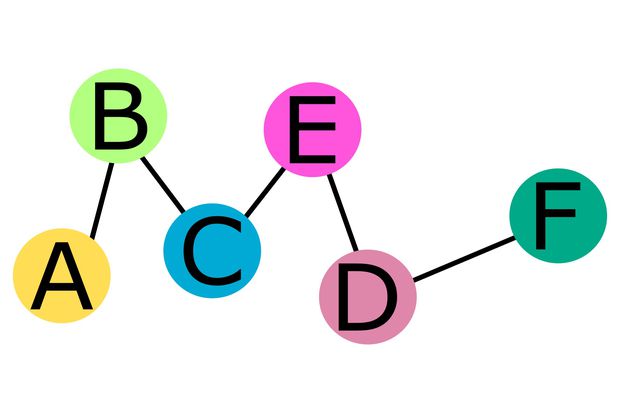Beginner Questions Answered
People wonder what dirty bitcoin is, because they’ve read about it in the news or maybe the term has come up in conversation. We explain to you, why the term “dirty bitcoin” is a way to confuse you with fear, uncertainty and doubt (also known as FUD). Dirty bitcoin, in a nutshell, is a way for the powers that be to discourage people from using bitcoin. Bitcoin itself cannot be dirty (or clean). Dirty bitcoin does not exist, because bitcoin is money and dirty money does not exist. Let’s unpack all of this.

Why dirty bitcoin is a FUD term
Fear uncertainty and doubt is a social attack vector on the bitcoin protocol. It discourages everyday people from using bitcoin by instilling just that: Fear or uncertainty or doubt, or FUD for short. There are many different FUDs out there and none of them hold up under scrutiny. A common FUD examples is Bitcoin’s energy usage, which is first and foremost a good thing: It makes bitcoin secure by providing a real-world energy cost to attack it. Additionally, the Bitcoin financial system is way more efficient than the alternative petrodollar system. In terms of opportunity cost, Bitcoin also passes the energy FUD argument.
But this article seeks to deconstruct the dirty-bitcoin-FUD, another commonly used social attack on bitcoin. It goes something like this:
“Bitcoin is used for criminal activity and bitcoins that were used for that activity are henceforth tainted and should not be touched in the future.”
This attack is used by regulators, who do not like bitcoin because it disrupts them and makes them irrelevant. The head of the European Central Bank, Christine Lagarde is one such example. In early 2021 she called for bitcoin regulation because of “funny business”. That’s quite a rich statement coming from somebody who herself has been convicted by a court of law over negligence in her role as French Minister of finance regarding a €400 million payment to a businessman friend of former French President Sarkozy.
What “dirty” looks like
If we were to entertain the idea of a “dirty bitcoin”, here’s what that would be: Bitcoin which has been used in criminal activity such as drug trafficking, extortion, cyber crimes and whatever else criminal we can think of. The idea behind the FUD is, that bitcoin “tainted” in any way can be discredited and should no longer be used.
That is nonsense on many levels. First, does the same apply to paper cash? Are bills, which were used in a crime no longer valid cash? Of course not. You cannot identify a bill that was used in a crime, stolen or otherwise because the bill has no memory of the event. Bitcoin is a somewhat transparent system, and the critics use this transparency against it. For that reason, more crime is being committed in the opaque cash system than in bitcoin, because the transparent nature of the bitcoin system helps law enforcement.
How long does “dirty” last?
Let’s suppose, we’re receiving some money on the bitcoin base layer for services rendered. We’ve made 1,000,000 satoshis by providing a service to a company. The company buys these satoshis on an exchange and transfers the funds into their custody and then into our address as payment. Now, let’s suppose that some of that money was used in a crime before. Is it dirty now? Why? We’ve done nothing wrong, broken no laws, and neither has the company which paid us. Why would we own dirty bitcoin, just because it was used in a crime before?
Let’s keep going with this thought and suppose we use these 1,000,000 satoshis to pay for a good, say a car we like. Is the money still dirty, now that it belongs to a car dealer? Or suppose we use only a fraction of it to purchase some groceries. Does the grocery store own “dirty money” now? What about the employees that get paid with that money? Where does it stop? Does it ever stop?
If we think these questions through, we must conclude that the concept of dirty bitcoin does not make much sense, because before long all money would have to be deemed dirty. Bitcoin is fungible and “dirty” units can end up in the same wallet as previously “clean” ones through no fault of the user. Recombining “dirty” and “clean”, what does that do?
Counter measures
Luckily, there are some counter measures, which increase bitcoin privacy and which we can use every day make the “dirty” aspect a non-starter. These counter measures are coin mixing and lightning. Let’s start with coin mixing.
Coin mixing
Coin mixing is a defensive technique you can employ to mix your bitcoin with the bitcoin of others to murky the waters for attackers on your privacy and other nefarious actors. As a simple example, say you put 100,000 satoshis into a mixing service with 100 other people who also contribute 100,000 each. That’s a total of 10,000,000 satoshis. These are now mixed inside the mixer and given back to you (less a fee), and you can now put them into cold storage or onto the second layer lightning. Coin mixers work in a way that the link between new coins and old coins becomes extremely difficult to make (if possible, at all). Suppose a dirty 100,000 satoshis went into your mix, does that mean that all outputs from the mix are dirty as well? Or are they all clean? Or is one percent “dirty” and 99 percent “clean”?
Lightning Network
The lightning network is a second layer solution which was developed as a scaling layer for the base protocol. The lightning layer runs on top of bitcoin on a decentralized computer network. Funds are locked up between two parties on the bitcoin base layer and in doing so moved up from the base chain into the lightning layer, where these funds are now available to move around the lightning network. Nodes on the lightning network have channels with other nodes. It is possible to move bitcoin from node A to node B without a direct connection between to two, if there is a path available through the network. Suppose, I have some “dirty” bitcoin and I am moving that into a lightning channel on my wallet A. I now want to transfer that bitcoin to a second wallet B which I also control and there’s no direct connection between the two. A to B via nodes C, D, E and F. On the way from A to B via C, D, E and F, channel balances are updated to reflect the transfer and my funds move through the network like they’d go through newtons cradle.

Ok, where’s the “dirty” bitcoin now? In spot B? Or in C? Because the transfer of my funds was from A to C only, not to B. C moved the money to D, D to E, E to F and F finally to B. There was no direct transfer taking place from A to B. The dirty bitcoin concept falls apart on the lightning layer and must therefore be abandoned as a concept.
In Summary
We’ve explored herein why “dirty” bitcoin is a bad concept to begin with. “Dirty” bitcoin is FUD and falls apart under scrutiny. Bitcoin is neither dirty nor clean. It just is. Privacy tools get better every year and we’ve got tools at our disposal, which allow us to improve our privacy and protect us from government overreach.
You have reached the end of What is dirty bitcoin? Thank you for your attention.
Have you considered signing up for a bitcoin savings plan? If you set up one with Swan bitcoin you get 10 dollars for free with my referral.
Support Me
You've reached the end of What is dirty bitcoin? This website was made and is maintained by Jogi. You can follow me on twitter here: @proofofjogi. You can also directly support bitcoin is the better money dot com by leaving me a tip if you would like to. Thank you for your support.
